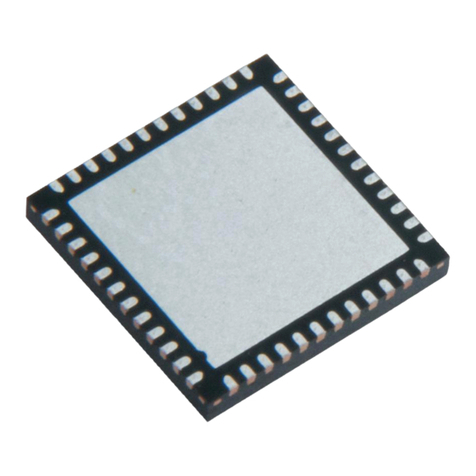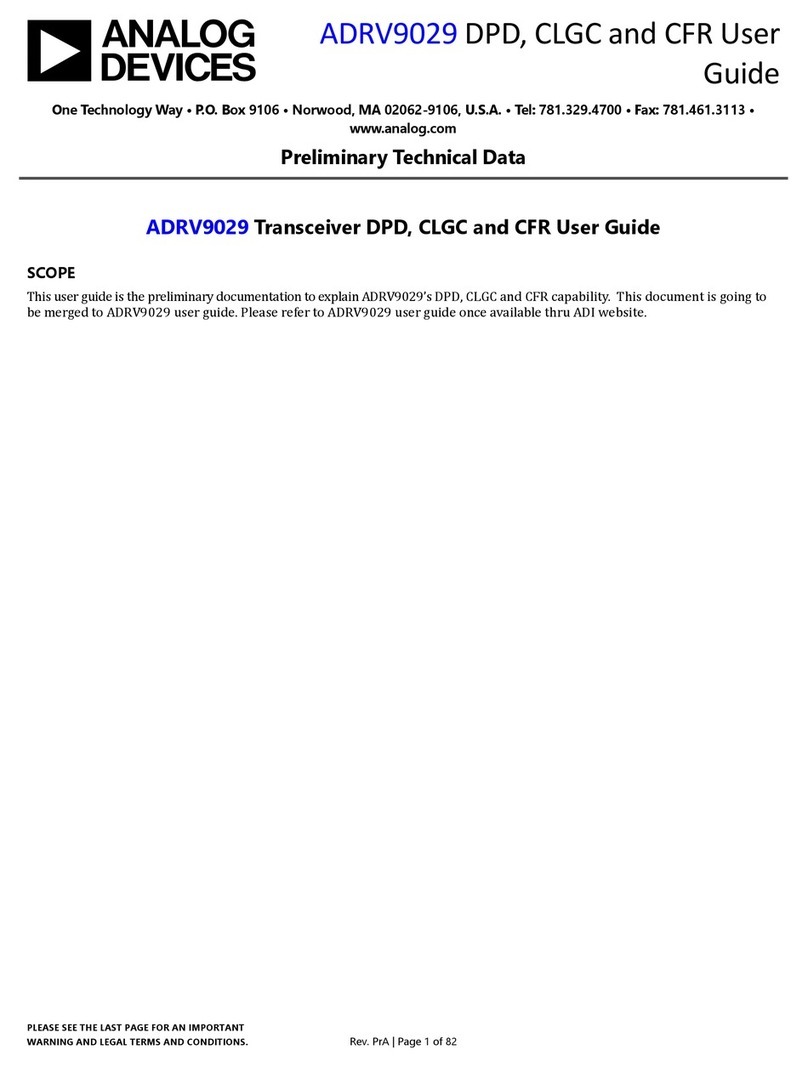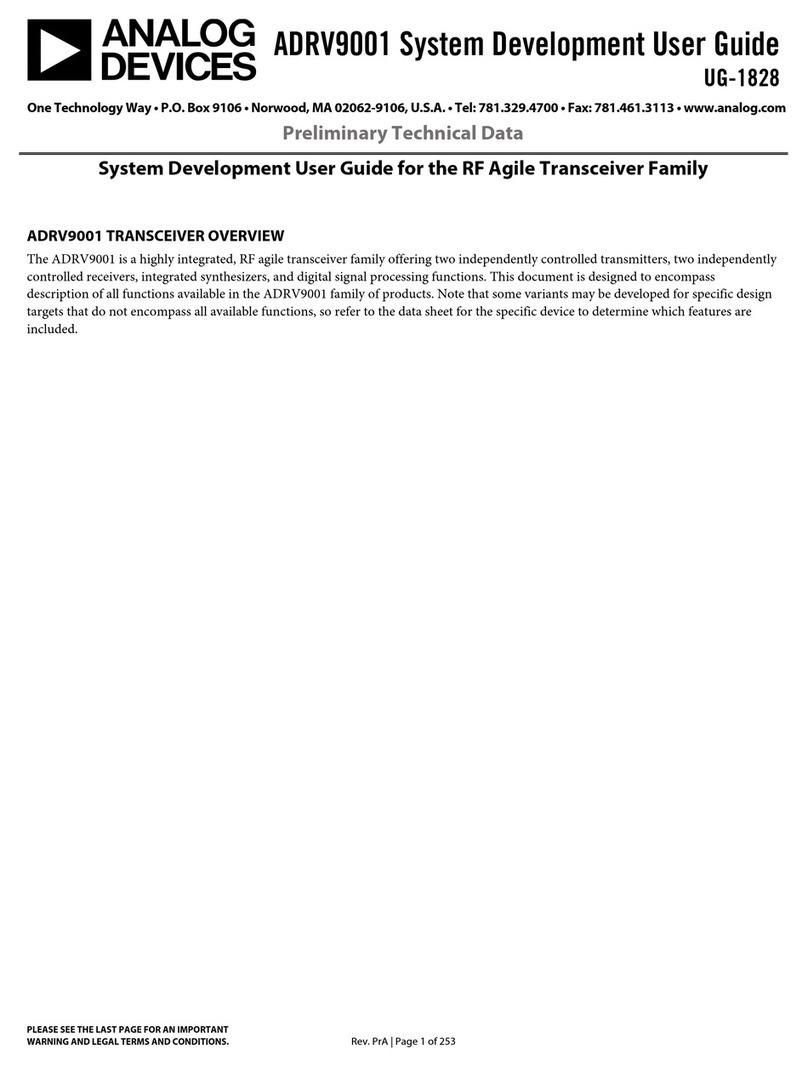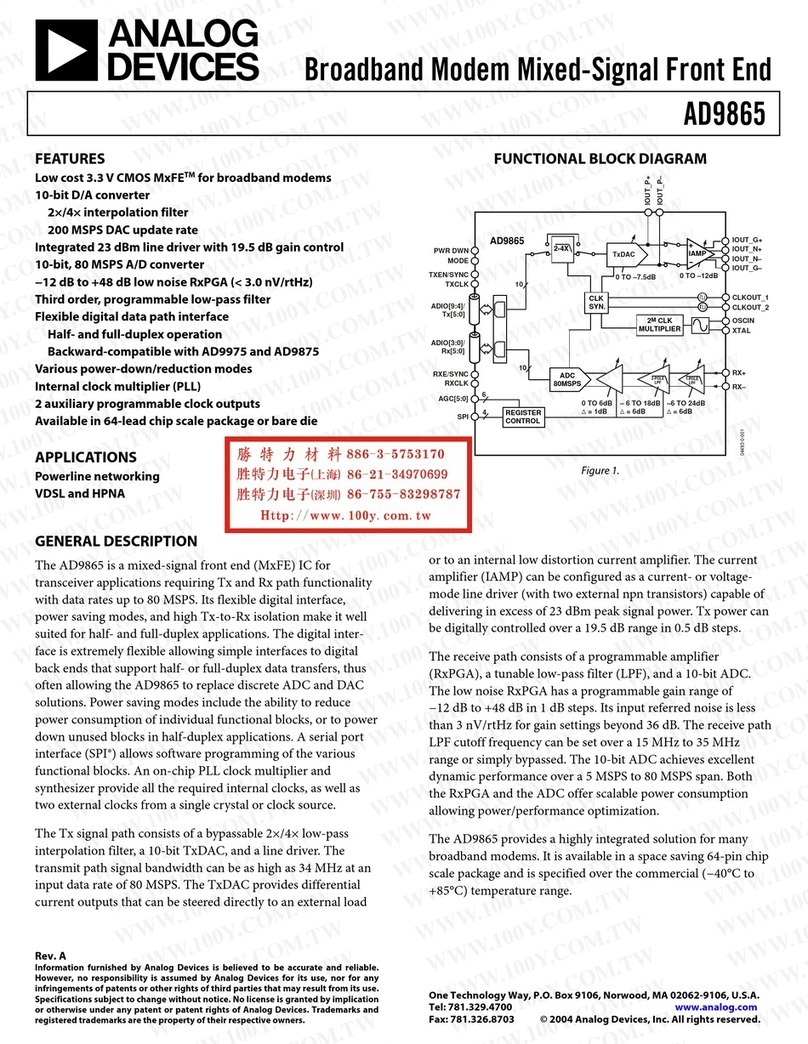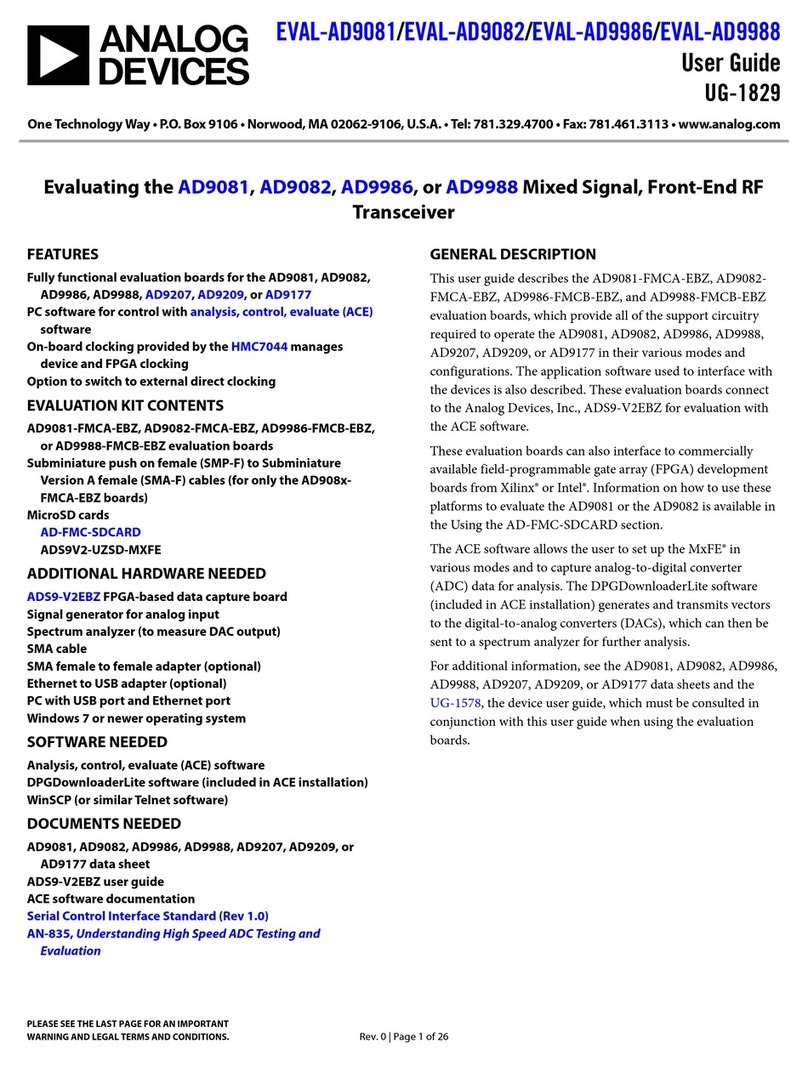
EVAL-ADM2463EEBZ/EVAL-ADM2763EEBZ User Guide UG-1715
Rev. 0 | Page 5 of 11
INPUT AND OUTPUT CONNECTIONS
Digital input and output signals are connected via the P1 and P2
screw terminal blocks to allow wire connections from the EVAL-
ADM2463EEBZ/EVAL-ADM2763EEBZ to a signal generator or
microcontroller. The evaluation boards include screw terminals
for receiver data output (RxD), receiver enable (RE), and driver
enable (DE) on P1. Screw terminals for the TxD and receiver
invert (INVR) functions are also available on P2. Alternatively,
jumper connections can connect these signals to the VDD1 pin or
GND1pins of the ADM2463E or ADM2763E (see Table 1).
Connections to the RS-485 bus are made via the P3 and P4
screw terminal blocks. The EVAL-ADM2463EEBZ/EVA L -
ADM2763EEBZ have four bus input and output signals: Signal
A for the noninverting input signal, Signal B for the inverting
input signal, Signal Y for the noninverting output signal, and
Signal Z for the inverting output signal. The bus cables also
include a common ground connection and can be connected to
the P4 screw terminal block of the evaluation boards. Test points
are available on the evaluation boards and are appropriately
labeled for all digital and bus input and output signals.
RADIATED EMISSIONS
The ADM2463E or ADM2763E encodes data across the isolation
barrier using an amplitude shift keying (ASK) modulation
scheme, which is optimized for both high noise immunity and
minimal radiated emissions. The EVAL-ADM2463EEBZ/
EVAL -ADM2763EEBZ are 2-layer printed circuit boards (PCB)
that meet the EN 55032 Class B radiated emissions requirements
under full load while operating at a maximum data rate of
500 kbps. To maximize the margin to the EN 55032 Class B
specification, adhere to the following guidelines:
•Place a 0.1 µF capacitor (C4) between the VDD1 pin and
GND1pin.
•Place a 0.1 µF capacitor (C5) between the VDD2 pin and
GND1pin.
•Ensure that the decoupling capacitors are placed as close as
possible to the corresponding ADM2463E or ADM2763E
pins.
The EVAL-ADM2463EEBZ/E VA L -ADM2763EEBZ, designed
according to these guidelines, meet EN 55032 Class B
requirements with margin.
OTHER BOARD COMPONENTS
The EVAL -ADM2463EEBZ/E VA L -ADM2763EEBZ have
footprints for the R4 and R5 termination resistors. The 120 Ω
termination resistors are fitted to the evaluation boards, but these
resistors can be removed or replaced with a resistor of a different
value as needed. Insert the LK6 jumper to connect the R4 resistor
and add a 120 Ω load to the RS-485 receiver. Insert the LK7 jumper
to connect the R5 resistor and add a 120 Ω load to the RS-485
driver. The LK6 and LK7 jumpers can be inserted to connect the
RS-485 driver outputs to the RS-485 receiver inputs. When LK4,
LK5, LK6, and LK7 are inserted, the two 120 Ω termination
resistors are connected in parallel, resulting in a 60 Ω load on
the RS-485 driver.
Biasing Resistors for Bus Idle Fail-Safe
The ADM2463E or ADM2763E has a built in receiver fail-safe
for the bus idle condition, but there are footprints on the EVA L-
ADM2463EEBZ/EVA L -ADM2763EEBZ for fitting the R6 and R7
pull-up resistors to the VDD2 supply on the ADM2463E or
ADM2763E Pin A and Pin Y, as well as the R8 and R9 pull-down
resistors to the GND2supply on Pin B and Pin Z. These resistors
can be fitted if the user is connecting to other devices that require
external biasing resistors on the bus. The exact value required for
a 200 mV minimum differential voltage in the bus idle condition
depends on the minimum supply voltage and the termination
scheme. For 5 V transceiver operation, 1140 Ω is recommended.
For 3.3 V transceiver operation, 900 Ω is recommended.
See the AN-960 Application Note, RS-485/RS-422 Circuit
Implementation Guide, for more information about the bus idle
fail-safe.
On-Board LTC1799 Oscillator
An LTC1799 clock oscillator is provided on the EVAL-
ADM2463EEBZ/E VA L-ADM2763EEBZ to allow convenient
evaluation of the ADM2463E or ADM2763E without the need
for an external signal source.
To use the LTC1799 oscillator for evaluation, insert the LK10
jumper. This setting connects the clock oscillator output to the
ADM2463E or ADM2763E TxD input pin.
The sum of the R3 and R12 resistors can be used to configure
the switching frequency of the clock oscillator (fOSC) within the
100 kHz to 250 kHz range. The frequency is calculated using the
following equation:
( )
=
+
OSC
fNR R
10 k
10 MHz 3 12
where:
4 kΩ ≤ (R3 + R12) ≤ 1 MΩ.
N= 1 or 10
The value of N is controlled with the R18 resistor. When R18 is
not inserted, N = 10. Insert a 0 Ω resistor at R18 to set N = 1 for
higher frequency operation. The EVAL-ADM2463EEBZ/EVAL -
ADM2763EEBZ ship with N = 10 and R3 + R12 = 40 kΩ,
setting the oscillator output frequency to 250 kHz.
The LTC1799 oscillator is powered from the VDD1 supply, and
can only be used when the VDD1 supply voltage is between 2.7 V
and 5.5 V. By removing the 0 Ω R17 resistor, the LTC1799 can
be disconnected from the VDD1 supply.
